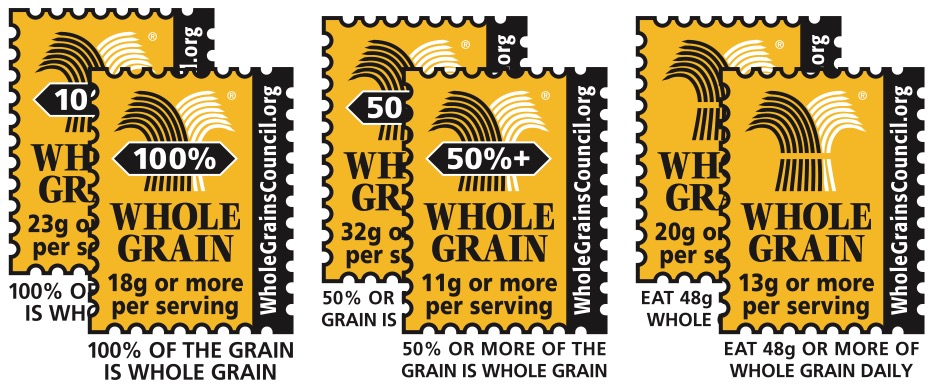Share This
The best way to choose whole grains is to look for products with the Whole Grain Stamp. When you use the Whole Grain Stamp as a guide, shopping for whole grain foods is not nearly as confusing as headlines may lead you to believe.
Is all whole wheat a whole grain?
While both science and common sense confirm that whole wheat that contains all of its original bran, germ, and endosperm is considered a whole grain, researchers recently tested a biomarker of whole grain content to find out more. In this study, scientists identified a lectin found in the germ tissue of whole wheat, called Wheat Germ Agglutinin (WGA) and tested commercial whole wheat flours and pastas (the brands we see at the supermarket) to evaluate their WGA levels, using it as a biomarker for the presence of whole wheat. The lack of clarity in the findings leave room for further study.
The authors explain that they used a very limited sampling of commercial products and weren’t able to control for a wide variety of factors including storage history, time on shelf, or wheat varietal. They found that the WGA content of different wheat varietals varied up to 24%, and that a previous study of European wheats that found a much wider variability in WGA content among different wheat varietals. This suggests that it may be very difficult to establish a WGA content standard by which commercial products can reasonably be measured.
Additionally, the authors noted that using WGA as a biomarker for whole wheat has been tested in the past and that one of the problems that was discovered was that WGA activity was diminished by high temperatures making it unsuitable for products like pasta. It’s not clear how they’ve tried to avoid this same trap in their own study, since part of their work was evaluating the WGA present in pasta products.
If temperature degrades WGA, it seems plausible that the industrial milling process itself (which involved high temperatures due to friction) might cause WGA degradation and therefore produce erroneous results. It is unclear if they have a sense of whether the WGA degrades over time, since their “control” flours were all freshly milled.
While some have taken these findings to conclude that the commercial products tested must not “really” be whole wheat, the reality is that WGA is clearly an imperfect marker of whole grain content. It is important to note, a product may have had some of its healthful bran removed, thus making it refined and no longer whole grain, and yet the WGA level would not indicate that anything is amiss. Further, the germ of the grain is the portion of the kernel that contains most of the fats. If a processor was discarding the germ, the resulting flour would have a noticeably lower fat content. (Whole grain hard red wheat has about 1.54g fat per 100g wheat, while refined all-purpose flour has only about 0.98g fat per 100g wheat.) However, an analysis between the fat content of the commercial whole wheat products and the locally milled whole wheat products was noticeably absent from this study.
The authors’ assertion that “products labeled as whole wheat may actually contain a substantial fraction of refined wheat, which is not often reported on food packaging” is actually not aligned with current FDA regulations. To reduce confusion and prevent refined wheat from masquerading as whole wheat, the FDA has a standard of identity that requires that all of the wheat in “whole wheat flour” must in fact be whole. Similar standards of identity exist for whole wheat pasta and whole wheat breads and rolls.
Shop confidently for whole grains.
Don’t let headlines be a source of confusion. You can shop with confidence when selecting whole grain foods —especially when you look for the Whole Grain Stamp. As noted in the study, the Whole Grain Stamp “can help consumers in identifying whole grain products” as the Stamp depicts the gram amount of whole grains in one serving of the product. Each Stamped product is personally reviewed through this 3rd party certification system to ensure that the consumer is getting correct information. With more than 13,000 products carrying the Whole Grain Stamp worldwide, there is a bound to be a whole grain food out there for everyone to enjoy.



Add a Comment